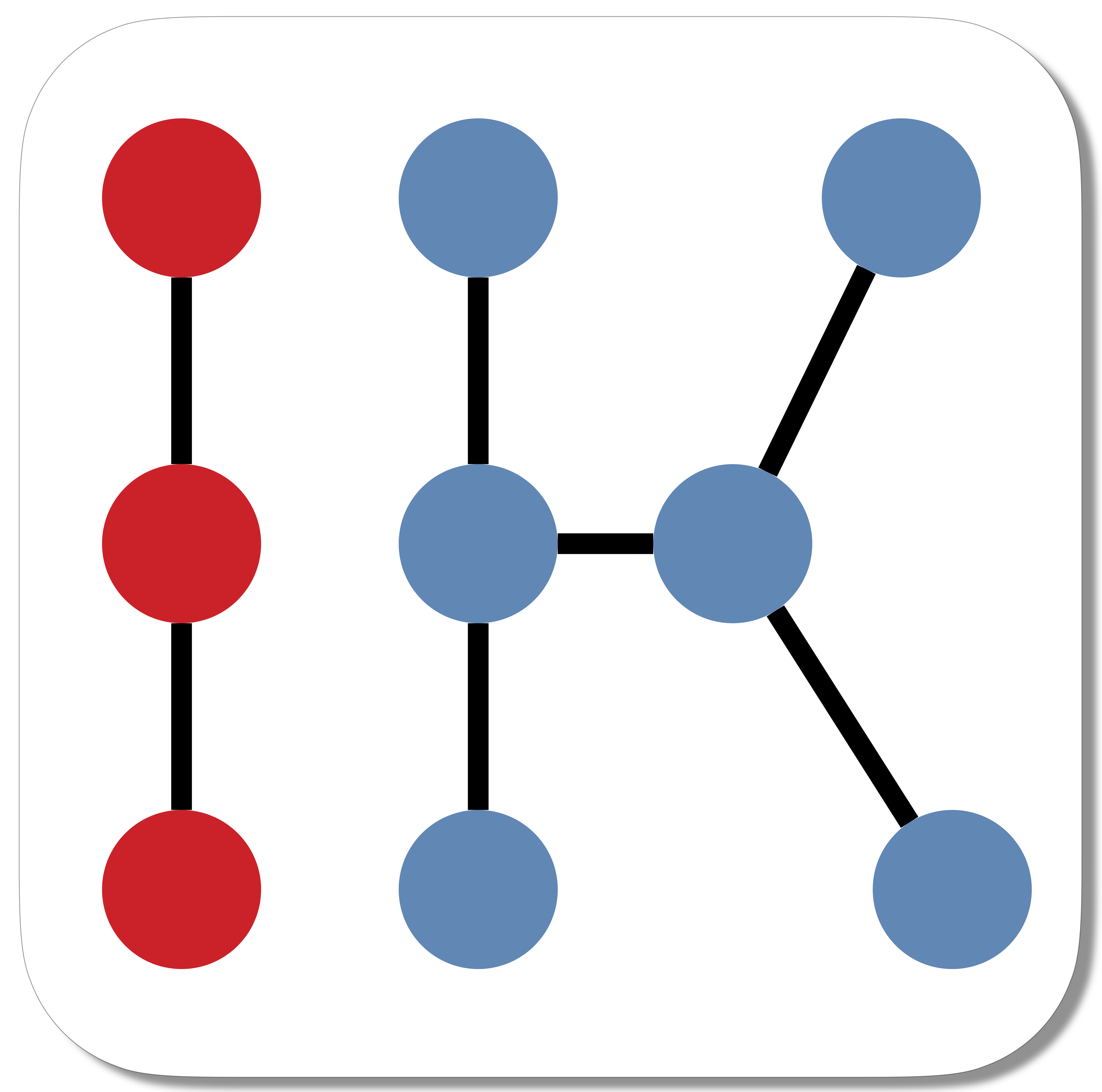GraphIK
GraphIK is a library for solving inverse kinematics problems by modelling robots as geometric graphs and using concepts from distance geometry.
Dependencies
GraphIK is implemented in Python 3. See setup.py for a full list of dependencies.
Usage
Use of GraphIK can be summarized by four key steps, which we'll walk through below (see the scripts in experiments/ for more details).
1. Load a Robot
In this example, we'll parse a URDF file describing a Schunk LWA4P manipulator.
from graphik.utils.roboturdf import load_schunk_lwa4d
robot, graph = load_schunk_lwa4d()GraphIK's interface between robot models and IK solvers is the abstract ProblemGraph class. For the LWA4P, we'll use ProblemGraphRevolute, a subclass of ProblemGraph that can represent 3D robots with revolute joints.
2. Instantiate a ProblemGraph Object with Obstacles
If you are considering an environment with spherical obstacles, you can include constraints that prevent collisions. In this example, we will use a set of spheres that approximate a table:
from graphik.utils.utils import table_environment
obstacles = table_environment()
# This loop is not needed if you are not using obstacle avoidance constraints
for idx, obs in enumerate(obstacles):
graph.add_spherical_obstacle(f"o{idx}", obs[0], obs[1])3. Specify a Goal Pose
Interfaces to our solvers require a goal pose defined by the liegroups library. For this simple example, using the robot's forward kinematics is the fastest way to get a sample goal pose:
q_goal = robot.random_configuration()
T_goal = robot.pose(q_goal, f"p{robot.n}")4. Solve the IK Problem
The main purpose of our graphical interpretation of robot kinematics is to develop distance-geometric IK solvers. One example is the Riemannian optimization-based solver implemented in RiemannianSolver.
from graphik.solvers.riemannian_solver import solve_with_riemannian
q_sol, solution_points = solve_with_riemannian(graph, T_goal, jit=False) # Returns None if infeasible or didn't solveFor faster computation, precompile costs and gradients using numba by running python costs.py in graphik/solvers/.
For a similar example using CIDGIK, a convex optimization-based approach, please see experiments/cidgik_example.py.
Publications and Related Work
If you use any of this code in your research work, please kindly cite the relevant publications listed here.
Riemannian Optimization
IEEE Transactions on Robotics: Riemannian Optimization for Distance-Geometric Inverse Kinematics
@article{marić2022riemannian,
author = {Filip Mari\'{c} and Matthew Giamou and Adam W. Hall and Soroush Khoubyarian and Ivan Petrović and Jonathan Kelly},
journal = {{IEEE} Transactions on Robotics},
month = {June},
number = {3},
pages = {1703--1722},
title = {Riemannian Optimization for Distance-Geometric Inverse Kinematics},
volume = {38},
year = {2022}
}arXiv: Riemannian Optimization for Distance-Geometric Inverse Kinematics
@misc{marić2021riemannian_arxiv,
author={Filip Marić and Matthew Giamou and Adam W. Hall and Soroush Khoubyarian and Ivan Petrović and Jonathan Kelly},
title={Riemannian Optimization for Distance-Geometric Inverse Kinematics},
year={2021},
eprint={2108.13720},
archivePrefix={arXiv},
primaryClass={cs.RO}
}arXiv: Inverse Kinematics as Low-Rank Euclidean Distance Matrix Completion
Semidefinite Programming (SDP) Relaxations
CIDGIK
IEEE Robotics & Automation Letters: Convex Iteration for Distance-Geometric Inverse Kinematics
@article{giamou2022convex,
author = {Matthew Giamou and Filip Marić and David M. Rosen and Valentin Peretroukhin and Nicholas Roy and Ivan Petrović and Jonathan Kelly},
journal = {{IEEE} Robotics and Automation Letters},
month = {April},
number = {2},
pages = {1952--1959},
title = {Convex Iteration for Distance-Geometric Inverse Kinematics},
volume = {7},
year = {2022}
}arXiv: Convex Iteration for Distance-Geometric Inverse Kinematics
@misc{giamou2022convex_arxiv,
author={Matthew Giamou and Filip Marić and David M. Rosen and Valentin Peretroukhin and Nicholas Roy and Ivan Petrović and Jonathan Kelly},
title={Convex Iteration for Distance-Geometric Inverse Kinematics},
year={2022},
eprint={2109.03374},
archivePrefix={arXiv},
primaryClass={cs.RO}
}Sparse Sum-of-Squares Optimization for Planar and Spherical IK
IEEE ICRA 2020: Inverse Kinematics for Serial Kinematic Chains via Sum of Squares Optimization
@inproceedings{marić2020inverse,
address = {Paris, France},
author = {Filip Marić and Matthew Giamou and Soroush Khoubyarian and Ivan Petrović and Jonathan Kelly},
booktitle = {Proceedings of the {IEEE} International Conference on Robotics and Automation {(ICRA})},
pages = {7101--7107},
title = {Inverse Kinematics for Serial Kinematic Chains via Sum of Squares Optimization},
year = {2020}
}arXiv: Inverse Kinematics for Serial Kinematic Chains via Sum of Squares Optimization
@misc{marić2022convex_arxiv,
author={Filip Marić and {Matthew Giamou and Soroush Khoubyarian and Ivan Petrović and Jonathan Kelly},
title={Inverse Kinematics for Serial Kinematic Chains via Sum of Squares Optimization},
year={2020},
eprint={1909.09318},
archivePrefix={arXiv},
primaryClass={cs.RO}
}MATLAB Code: https://github.com/utiasSTARS/sos-ik
